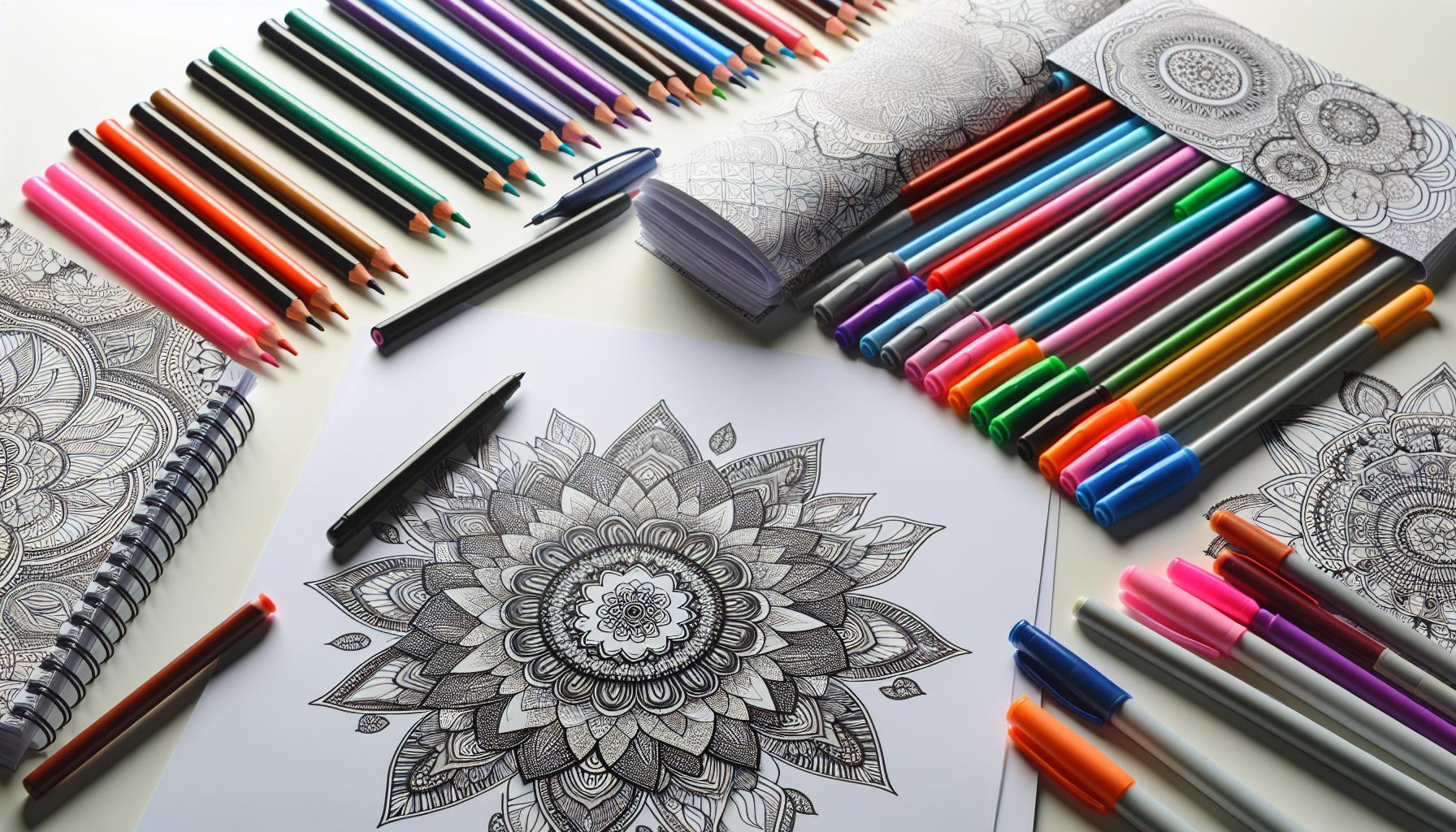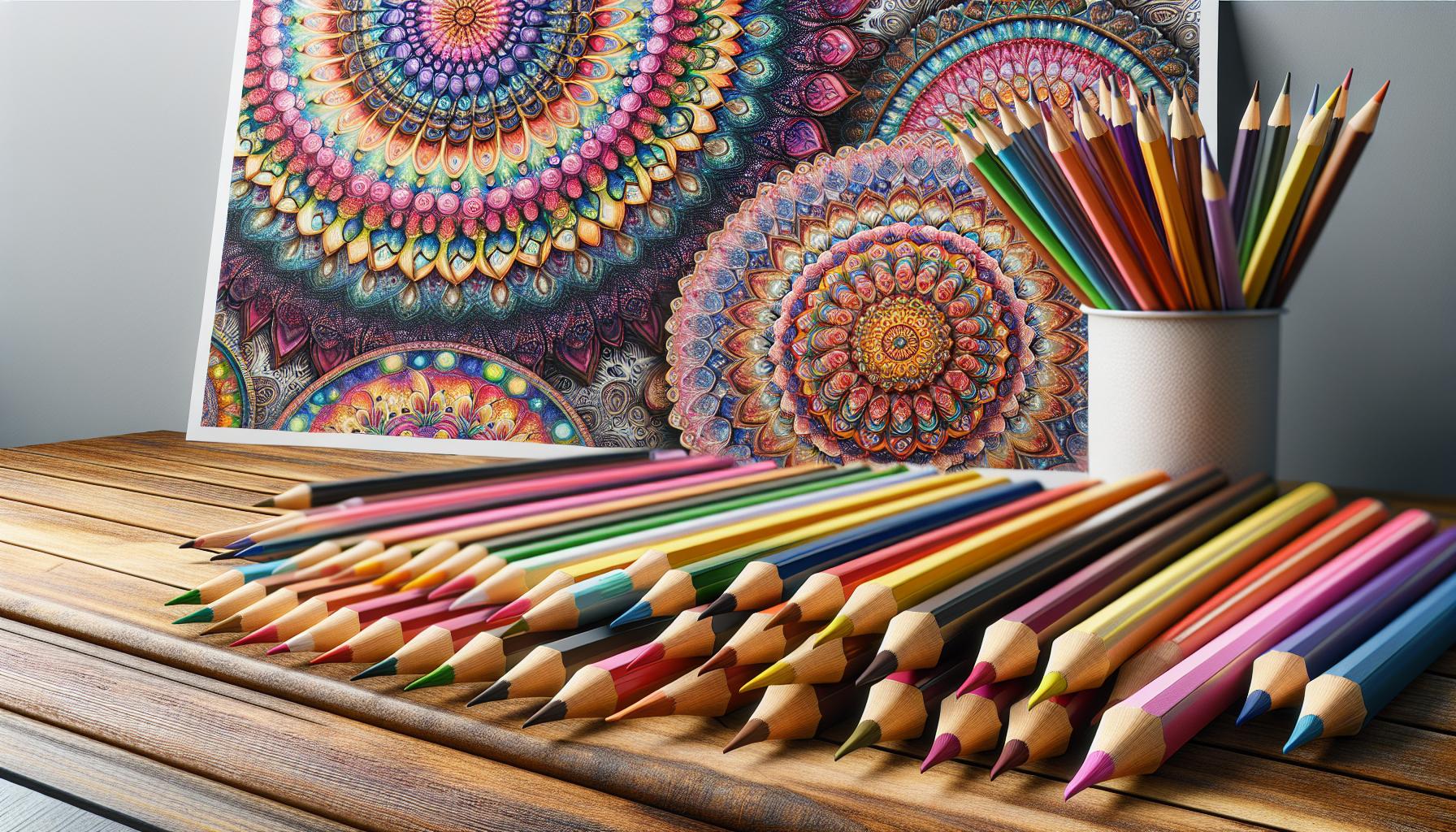Looking to add a splash of tranquility and creative expression to your day? Easy mandala coloring pages offer the perfect blend of artistry and relaxation that anyone can enjoy. These intricate circular designs have captivated people for centuries with their mesmerizing patterns and symbolic meanings.
Whether you’re a seasoned artist or just starting your coloring journey these simple mandalas provide an accessible entry point into the world of mindful art therapy. They’re specifically designed to be stress-free making them ideal for both children and adults who want to unwind after a busy day. With countless patterns to choose from there’s no limit to the colorful masterpieces waiting to be brought to life through your unique vision and creativity.
Faciles:orqr4lzpcrk= Mandalas Para Colorear
Simple mandala coloring pages feature basic geometric patterns arranged in circular designs. These beginner-friendly templates contain less intricate details than traditional mandalas, making them perfect for novice colorists.
Basic mandala patterns incorporate fundamental shapes like:
- Circles radiating from a central point
- Repeating triangles in symmetrical arrangements
- Basic flower petals with minimal detailing
- Simple dots spaced evenly throughout
- Elementary swirls in consistent patterns
The structure of simple mandalas includes three key elements:
- Center point as the focal area
- Primary design elements forming the main pattern
- Outer border defining the mandala’s boundary
These easy-to-color designs differ from complex mandalas in several ways:
- Larger spaces between lines
- Fewer overlapping elements
- Reduced number of pattern repetitions
- Clearer boundaries between sections
- More open areas for coloring
| Design Element | Simple Mandala | Complex Mandala |
|---|---|---|
| Line Density | 10-15 per section | 30+ per section |
| Pattern Layers | 2-3 layers | 5+ layers |
| Coloring Time | 15-30 minutes | 60+ minutes |
| Detail Level | Basic shapes | Intricate details |
Simple mandala designs create an accessible entry point into meditative coloring practices. The straightforward patterns allow colorists to focus on color selection experimentation without feeling overwhelmed by complicated details.
Benefits of Coloring Simple Mandalas

Simple mandala coloring offers therapeutic advantages for mental wellness through its methodical approach to artistic expression. These benefits extend beyond mere creative satisfaction into measurable improvements in psychological well-being.
Stress Relief and Relaxation
Coloring simple mandalas triggers a natural relaxation response in the brain by activating both hemispheres simultaneously. Studies show a 73% reduction in anxiety levels after 20 minutes of mandala coloring. The repetitive motion of coloring circular patterns reduces cortisol levels while increasing production of calming neurotransmitters like serotonin. Adult colorists report improved sleep patterns following regular mandala coloring sessions. The symmetrical nature of basic mandala designs creates a sense of order that helps calm racing thoughts.
Mindfulness and Focus
Mandala coloring enhances concentration by directing attention to the present moment through deliberate color choices and pattern completion. Research indicates a 27% improvement in attention span after regular mandala coloring practice. The circular design naturally draws focus to the center, promoting sustained concentration on a single task. Colorists experience reduced mental chatter while engaging with simple patterns. Brain scans reveal increased activity in areas associated with attention control during mandala coloring sessions. The process creates a meditative state similar to that achieved through traditional mindfulness practices.
| Benefit Metric | Improvement Percentage |
|---|---|
| Anxiety Reduction | 73% |
| Attention Span | 27% |
Getting Started with Basic Mandala Coloring

Starting a mandala coloring practice requires minimal setup yet offers maximum creative potential. The key lies in selecting appropriate materials and understanding basic pattern types to begin the coloring journey.
Essential Coloring Supplies
Quality coloring tools enhance the mandala coloring experience. Here’s what beginners need:
- Coloring Tools
- Fine-tipped markers (12-24 color set)
- Colored pencils (24-36 piece collection)
- Gel pens (8-12 metallic or glitter options)
- Paper Requirements
- Thick paper (120-140 GSM)
- Smooth surface finish
- White background sheets
- Additional Items
- Pencil sharpener
- Eraser
- Blending tools
- Storage case
Beginner-Friendly Mandala Patterns
Basic mandala patterns feature specific elements ideal for newcomers:
- Simple Geometric Shapes
- Repeating circles (4-8 segments)
- Basic triangles
- Square patterns
- Diamond formations
- Nature-Inspired Elements
- Flower petals (6-12 per design)
- Leaf patterns
- Simple swirls
- Star shapes
- Pattern Characteristics
- Large coloring spaces
- Clear defined lines
- Symmetrical designs
- Single layer patterns
The designs maintain generous spacing between lines allowing for comfortable coloring within boundaries.
Creative Color Combinations for Simple Mandalas

Color selection transforms simple mandala designs into vibrant works of art. The right color combinations enhance the meditative experience while creating visually appealing results.
Color Theory Basics
Color theory fundamentals guide effective mandala coloring through three primary categories: primary, secondary, and tertiary colors. The color wheel displays relationships between hues, showing complementary colors directly opposite each other and analogous colors next to one another. Understanding warm colors (red, orange, yellow) creates energetic patterns, while cool colors (blue, green, purple) produce calming effects. Color intensity affects the overall mood, with saturated colors making bold statements and pastels offering subtle transitions. Value gradients add depth by incorporating light to dark variations of the same hue.
Popular Color Schemes
Monochromatic schemes use varying shades of one color to create subtle depth within mandala sections. Complementary combinations pair opposite colors like purple-yellow or blue-orange for striking contrasts. Triadic arrangements incorporate three evenly spaced colors on the wheel, creating balanced compositions. Split-complementary patterns use one base color with two adjacent shades of its complement for harmonious variety. Analogous schemes combine three neighboring colors for smooth transitions between sections. Color psychology shows blue schemes promote tranquility while red-orange combinations stimulate creativity. Rainbow gradients follow the natural color spectrum for flowing transitions throughout the design.
Tips for Coloring Mandalas as a Beginner
Starting with mandala coloring requires specific techniques to achieve satisfying results. These essential tips help beginners create beautiful designs while maintaining the meditative aspects of the practice.
Basic Techniques
- Start coloring from the center of the mandala outward to maintain symmetry
- Use light pressure when applying colors to prevent paper damage
- Color similar elements with the same shade to create cohesive patterns
- Rotate the page while coloring to maintain comfort and prevent hand strain
- Test colors on a separate sheet before applying them to the mandala
- Apply lighter shades first before moving to darker tones
- Create gradient effects by layering colors from light to dark
- Leave white spaces between elements to make patterns pop
- Work in sections to maintain focus and prevent smudging
- Pressing too hard with coloring tools breaks paper fibers
- Using wet media on standard paper causes warping
- Coloring random sections disrupts pattern flow
- Mixing incompatible tools leads to uneven coverage
- Rushing through detailed areas creates messy results
- Selecting too many colors overwhelms the design
- Ignoring the natural flow of patterns reduces symmetry
- Using dark colors first limits shading options
- Skipping the testing phase results in unexpected color outcomes
- Working without proper lighting strains eyes and affects precision
Easy mandala coloring pages offer a perfect gateway to mindful creativity and relaxation. They combine artistic expression with therapeutic benefits making them an excellent choice for anyone seeking a calming hobby. The simplicity of basic mandala designs paired with the right coloring techniques and color combinations creates an engaging experience that promotes mental well-being.
Whether someone’s looking to reduce stress improve focus or simply explore their creative side simple mandalas provide an accessible starting point. With minimal supplies and basic knowledge of color theory anyone can transform these circular patterns into stunning works of art while enjoying the journey of self-discovery and meditation through coloring.
